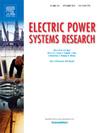A discussion on approaches to consider current front time of linearly rising waveforms applied to the assessment of the lightning performance of TLs according with typical range of backflashover critical currents
IF 3.3
3区 工程技术
Q2 ENGINEERING, ELECTRICAL & ELECTRONIC
引用次数: 0
Abstract
This work discusses different approaches to represent front time on linearly rising current waveforms applied on the assessment of the lightning performance of transmission lines (TLs) in terms of backflashover. Computational simulations with the Hybrid Electromagnetic model and the integration method considering TLs of voltage level of 138 kV, 230 kV, and 500 kV supported the analyses. The results indicated the assumption of a fixed value equal to the median Td30 front time as a consistent approach in comparison with the results provided by the use of correlation expressions, mainly for those conditions of tower-footing impedance (Zp) that lead to critical currents up to 100 kA (i.e., Zp greater than 10 Ω for 138 kV TLs, and Zp greater than about 40 Ω for 230 kV and 500 kV TLs). For those cases with critical currents higher than 100 kA, the use of median Td30 is also recommended, since the observed difference occurs for backflashover probabilities of the order of 1 % and lower, which does not impact the estimated performance. Similar conclusion applies for the use of a fixed front time of 2 μs in comparison to the use of the correlation related to the minimum equivalent front time Tm.
求助全文
约1分钟内获得全文
求助全文
来源期刊

Electric Power Systems Research
工程技术-工程:电子与电气
CiteScore
7.50
自引率
17.90%
发文量
963
审稿时长
3.8 months
期刊介绍:
Electric Power Systems Research is an international medium for the publication of original papers concerned with the generation, transmission, distribution and utilization of electrical energy. The journal aims at presenting important results of work in this field, whether in the form of applied research, development of new procedures or components, orginal application of existing knowledge or new designapproaches. The scope of Electric Power Systems Research is broad, encompassing all aspects of electric power systems. The following list of topics is not intended to be exhaustive, but rather to indicate topics that fall within the journal purview.
• Generation techniques ranging from advances in conventional electromechanical methods, through nuclear power generation, to renewable energy generation.
• Transmission, spanning the broad area from UHV (ac and dc) to network operation and protection, line routing and design.
• Substation work: equipment design, protection and control systems.
• Distribution techniques, equipment development, and smart grids.
• The utilization area from energy efficiency to distributed load levelling techniques.
• Systems studies including control techniques, planning, optimization methods, stability, security assessment and insulation coordination.
 求助内容:
求助内容: 应助结果提醒方式:
应助结果提醒方式:


